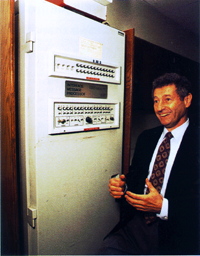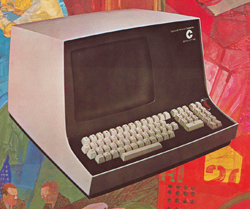"The network is thus a store and forward system and as such must deal with problems of routing, buffering, synchronization, error control, reliability, and other related issues. To insulate the computer centers from these problems, and to insulate the network from the problems of the computer centers, ARPA decided to place identical small processors at each network node, to interconnect these small processors with leased common-carrier circuits to form a subnet, and to connect each research computer center into the net via the local small processor." In video:
Leonard Kleinrock: Engineer, computer scientist, Internet pioneer, researcher of queuing theory, contributor to packet switching, and professor of computer science at UCLA. |
|
Without IMPs, packet switching couldn't be implemented. These processors, now called routers, are still in use today. Without them, the Internet would not be reliable enough to support millions of users and allow for widespread benefits.



